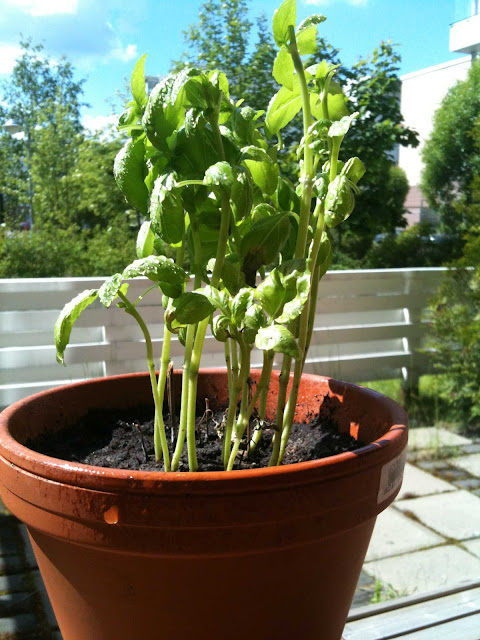 In the olden days, when money and food were tight, you had to use everything to the last drop. Milk kissel was served as dessert, and to use milk that was getting old but not spoiled yet. You can use milk that is not spoiled, discoloured or smelly, even it's a few days old. Actually there are cake recipes where soured milk or cream is preferred, and slightly sour milk is also good for pancakes, bread and sweetbread. But I digress - the main point of this post is milk kissel, the Finnish version of panna cotta.
In the olden days, when money and food were tight, you had to use everything to the last drop. Milk kissel was served as dessert, and to use milk that was getting old but not spoiled yet. You can use milk that is not spoiled, discoloured or smelly, even it's a few days old. Actually there are cake recipes where soured milk or cream is preferred, and slightly sour milk is also good for pancakes, bread and sweetbread. But I digress - the main point of this post is milk kissel, the Finnish version of panna cotta. Milk kissel is not even very heavy treat. You can use semi-skinned milk and keep sugar to the minimum. Instead of jams or sauces, you can use fresh berries or diced fruit. Use a kettle with a thick base or a non-stick coated kettle. Original recipe here (in Finnish). You can also use potato starch for thickening (1 dl for 1 L milk). If you want the lighter version follow the instructions and leave white chocolate out. Makes a light dessert for 2-3 or a bowl of comfort food for 1 person.
Original recipe (measures slightly adjusted):
- 3 dl milk (semi-skimmed, whole or mix of milk and cream)
- 2 tbsp cornstarch (Maizena)
- 1 tbsp caster sugar
- Pinch of icing sugar
- 1 tsp vanilla powder
- 60gr white chocolate
 1. Put milk in a kettle with cornstarch, caster sugar and vanilla powder. Whisk properly and bring to lightly boil. Keep whisking and let it boil for 2 mins or until it thickend, then remove from heat.
1. Put milk in a kettle with cornstarch, caster sugar and vanilla powder. Whisk properly and bring to lightly boil. Keep whisking and let it boil for 2 mins or until it thickend, then remove from heat. 2. Add white choc or icing sugar into the milk, mix and let melt.
2. Add white choc or icing sugar into the milk, mix and let melt. 3. Fill a sink with cold water and place the kettle in the cold water. Let cool whisking occasionally to avoid film forming on the surface.
3. Fill a sink with cold water and place the kettle in the cold water. Let cool whisking occasionally to avoid film forming on the surface. Raspberry sauce
This is a recipe I picked up in a book, orginally meant to be served with pavlova swiss roll. You dont need anything complicated with milk kissel, but this adds a little bit more glam to the dessert.- 200gr raspberries
- 2 tbsp rum (or juice; orange, apple, etc.)
- 1 tsp flour sugar
 1. Put raspberries, rum and sugar in a bowl.
1. Put raspberries, rum and sugar in a bowl.  2. Mix with spoon (or use a food processor) and crush the berries. Mix until an even mass.
2. Mix with spoon (or use a food processor) and crush the berries. Mix until an even mass.  3. (optional) Put the raspberries into a kettle and boil for 2 mins. Sometimes imported frozen raspberries have been known to cause food poisoning epidemics, so to be on safe side it's best to heat them. If you have berries from a safe source, just skip this step.
3. (optional) Put the raspberries into a kettle and boil for 2 mins. Sometimes imported frozen raspberries have been known to cause food poisoning epidemics, so to be on safe side it's best to heat them. If you have berries from a safe source, just skip this step.4. Check for sugar. Milk kissel with white chocolate is rather sweet, so you can leave the berries a bit bitter to form a nice contrast.
 |
| Put some kissel in a glass |
 |
| Add some raspberry sauce |
 |
| Add more milk kissel on top and a teaspoonful of raspberry jam. Enjoy! |









































